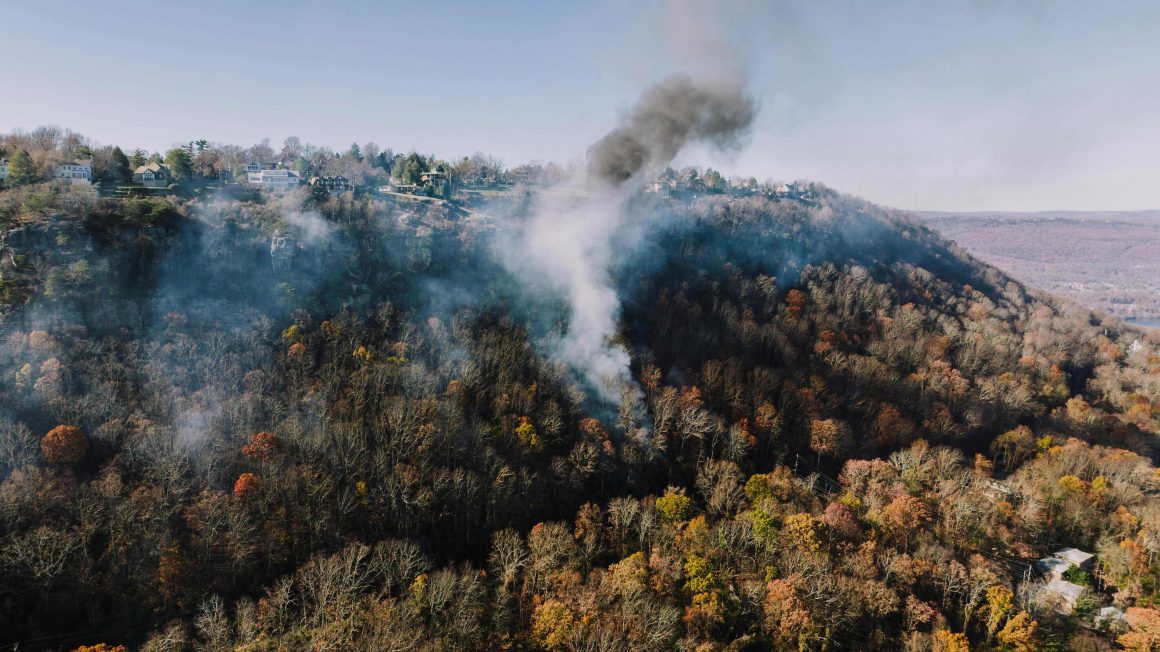
How Indigenous wisdom can save Canada from wildfire devastation
By Malia Jolly, December 15 2024—
Wildfires have become an increasingly devastating reality for Alberta and much of Canada. In 2023 alone, Alberta faced its worst wildfire season in recorded history, with over 2.2 million hectares of land burned and thousands of residents displaced from their homes. Entire communities were uprooted, and the scars on the landscape and its people serve as a sobering reminder of the growing wildfire crisis.
Jonathan Brewer, a specialist of cultural protocols at the University of Calgary’s Office of Indigenous Engagement, has a unique perspective on how to address these challenges. Brewer, who grew up on the Blood Reserve and Blackfeet Reservation in Montana, spent years battling wildfires across the northwestern United States. His expertise extends beyond modern firefighting techniques. He carries the wisdom of his ancestors—knowledge of controlled burns that once shaped Canada’s landscapes into resilient ecosystems.
“A long time ago, before contact, there was a fire suppression method that we used—or not suppression, fire usage,” Brewer said. “Fire was used to control the land. We would set fire to the grass so that it would transfer nutrients to grow and bring the buffalo back to that area.”
These traditional practices served a dual purpose: they sustained the environment and ensured resources were available for future generations. Brewer described how Indigenous communities intentionally burned overgrowth in forests, clearing underbrush to make them safer and healthier.
“The forests we see today are not what they used to look like,” he explained. “They are way overgrown compared to the past. If you compare a photo from the late 1800s to today, you’ll see the difference. There’s way too much deadfall, and it’s much harder to manage fires in forests like that.”
Brewer’s introduction to firefighting came early in life. Inspired by his grandfather, a wildland firefighter and sawyer, he spent years with the Montana Indian Firefighting Association, travelling across the U.S. to fight fires.
“My grandfather used to tell us stories about fighting fires, tying himself to a tree, and sleeping on the side of a mountain,” Brewer recalled. “I wanted to be just like him.”
However, Brewer’s career was cut short after a flare-up left him with severe lung damage. Despite the setback, the experience deepened his appreciation for traditional fire management and its cultural importance.
“Firefighting was more than just a job—it was part of something traditional,” Brewer said. “It was about controlling the land and keeping it healthy.”
Today, Brewer advocates for stronger collaboration between Indigenous communities and government agencies to tackle Canada’s wildfire crisis. He highlighted the potential for Indigenous communities to contribute to firefighting efforts but noted systemic barriers that limit their participation.
“There are 14,000 people on the Blood Reserve, and 80 per cent of them are unemployed,” Brewer said. “That’s a lot of hands and feet that could be helping fight fires, but there aren’t enough crews, and there isn’t enough funding to support them.”
Brewer also pointed to restrictive hiring practices as a significant barrier to involving more Indigenous individuals in wildfire management. Policies that prevent people with minor criminal records from joining firefighting crews unnecessarily limit the pool of capable and willing workers.
“People need to make a living,” he said. “Even if they’ve made mistakes in the past, they should still have the opportunity to work and contribute.”
Integrating Indigenous fire management practices into Canada’s broader wildfire strategy isn’t just about preserving cultural heritage—it’s a practical necessity. Traditional methods, such as clearing deadfall and conducting controlled burns, are proven to reduce wildfire severity and make the environment more manageable.
“The undergrowth and deadfall are what make fires so intense today,” he said. “If we managed the forests the way we used to, we wouldn’t see fires spreading so fast and getting so dangerous.”
Looking to the future, Brewer emphasized the importance of building stronger partnerships between Indigenous communities and government agencies. Breaking down jurisdictional barriers and fostering open communication are essential steps toward more effective wildfire management.
“We need more contact between agencies and communities,” he said. “The boundaries between jurisdictions can get in the way of firefighting efforts, and breaking those down would make things a lot more fluid.”
Public education is another crucial aspect of improving wildfire management. Brewer stressed the need for greater awareness about fire prevention, including properly extinguishing campfires, adhering to fire bans, and understanding the risks posed by common activities in the outdoors. He emphasized that even small actions, like ensuring cigarette butts are fully extinguished and avoiding the use of ATVs during fire bans, can have a significant impact on reducing wildfire risks.
“There are structures out there, there are houses out there, and when you don’t control your use of ATVs or cigarettes, it could be life-threatening,” he said. “People need to be more fire-aware. Small actions can make a big difference.”
As the conversation came to a close, Brewer reflected on the broader significance of Indigenous fire management, emphasizing the importance of respecting the land and fostering greater awareness about fire prevention. He noted that small, everyday actions by individuals can make a substantial difference in reducing wildfire risks.
“If they’re going to be going out in the backcountry, they should be aware that their actions out there can cause fires,” Brewer said. “If they can control what they do in the woods and educate themselves, it’ll help the greater communities.”
For Brewer, the key to addressing Canada’s wildfire crisis is not only in modern advancements but also in embracing and applying traditional Indigenous practices. “If we can educate people about other ways to suppress fire before it happens, that would be one of the best ways to help,” he said.
